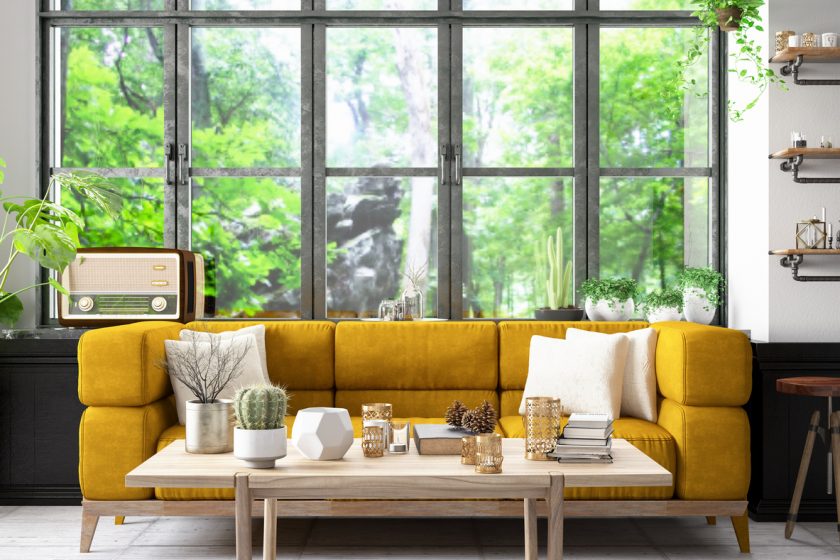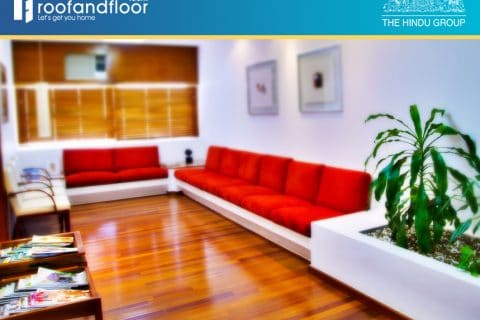Most of us spend a good 80 to 90 per cent of our lives indoors, and now with the pandemic enforcing work from home as our new paradigm, we often don’t go outdoors at all! What we don’t realise is that an indoor environment is often toxic. We breathe in stale air, inhale chemicals from the paint, carpets or upholstery, and do not get the vitamin D that sunlight gives us.
The solution? Open up your homes to natural air, sunlight, and space, and you can get all the outdoor health benefits you need right within your home!
Here’s how.
Open the windows
There’s no substitute to sunlight, and by keeping your windows shut you are losing all the benefits of this natural disinfectant. By spending at least half an hour in the sun, you can get your daily dose of vitamin D, and inject a much-needed boost to your immune system.
Ever wondered why you feel down and depressed after spending a whole day indoors? Sunlight increases serotonin and endorphins, which are the feel-good hormones that stabilise your mood. It also regulates your circadian rhythms which determine your sleep cycle, a clear indicator of how refreshed you feel through the day!

In the morning, you should keep the windows on the eastern side of your home open, and do the same for the windows on the west side in the evenings.
If you are still constructing your house, ask your architect if it’s possible to install glass skylights in the roof. There’s nothing quite as refreshing as waking up with the morning light slanting across your bedroom floor!
Add green plants
Green plants not only add aesthetic appeal to your décor, but they are known to refresh the air around them—removing harmful toxins, chemicals and indoor pollutants. As everyone knows, they convert carbon dioxide to oxygen; so if you are unable to get out for a walk in the fresh air, placing your home office near some indoor greens can be the next best thing.
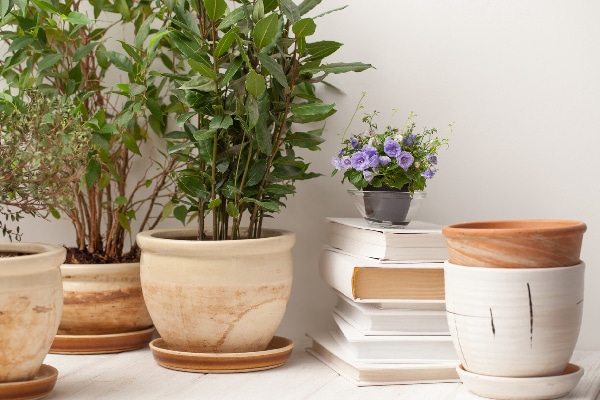
And this, in fact, has been scientifically proven to be true. A TED talk by Kamal Meattle shows that plants like the areca palm, mother-in-law’s tongue and the money plant can purify indoor air and create a sustainable indoor environment 24*7. By combining these three plants, the indoor air can be oxygenated and cleaned of formaldehyde and other volatile chemicals.
Create an indoor garden
Incorporating an indoor courtyard with a garden is also a lovely, aesthetic way to let your home breathe. Check with your interior designer if it’s possible to add this in a home that’s already completed; under the staircase, for instance, or in a corner that’s not used but gets sunlight at some part of the day.
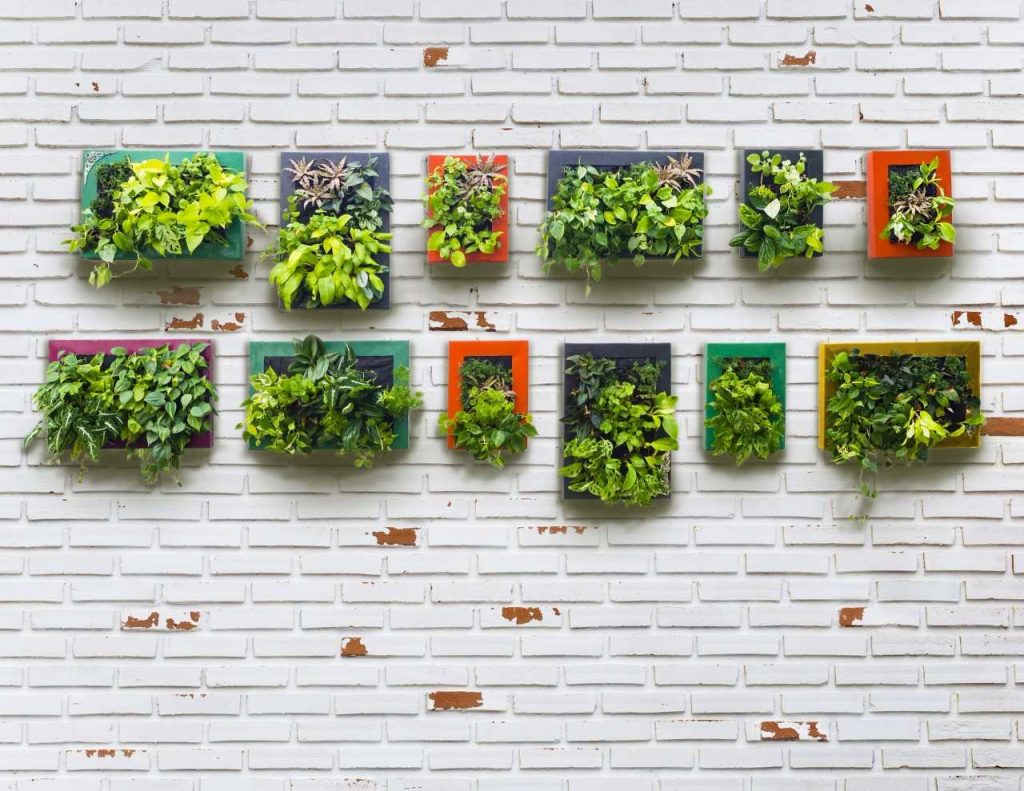
If your home is still in the construction stage, then your architect will be able to incorporate a lovely central garden with a skylight above so that you can have an oasis of green in your home. It’s also a lovely idea to have an indoor waterfall, as the sound of gurgling water is soothing and relaxing.
Choose the right colours and materials
As a rule, light colours will make a room appear brighter. Whites and pastels have higher levels of reflectivity, while dark colours have low reflectivity and will absorb the light rather than spread it around. Opting for light coloured paint, furniture and floors will also help to make your room feel larger than it is.
The materials you choose also play an important role in brightening up your spaces. Heavy fabrics like velvet and wool can make the room feel heavy and constrict the space. Instead, opt for cotton or linen fabrics which are both sustainable and feel lighter. Using natural materials for furniture and furnishings can make even a room that’s on the smaller side feel more spacious than it actually is.

A room that is done up in a palette of white, using reflective materials can be up to 75 per cent brighter than a room with a dark, non-reflective theme.
Rethink the doors
Except for the bedrooms and bathrooms, do you really need doors in every room? Instead of having solid flush doors, consider installing doors with glass panels in the living room, family and perhaps even the entrance door. Transparent doors will add to the spacious look and feel of your home.
If possible, do check with your designer to see whether you can knock down an entire wall. Having an open plan home will open up the spaces and create more family intimacy. An open plan living, dining and kitchen creates the illusion of a larger space, adding increased natural light and allowing the free flow of fresh air through your home.
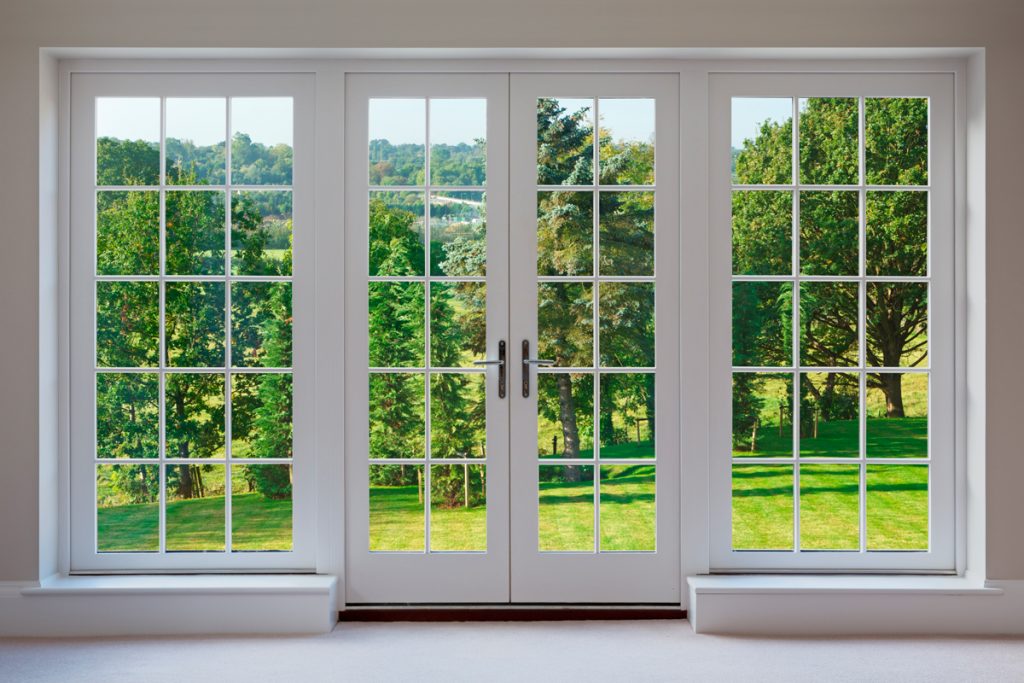
Tips and tricks from top designers
- Unless you are on the ground floor and need your privacy, you should consider doing away with curtains altogether.
- Otherwise, use thin muslin drapes instead so that the sunlight is not blocked even when the drapes are drawn.
- When you install the window drapes, position the rod in such a way that it extends at least 6 inches to a foot outside the window frame on either side. This way, when the curtains are pulled to the side, they will not be blocking the windows.
- Line the windows and balcony with greenery, or create a living wall with herbs in small pots.
- Use plants which will thrive in minimal sunlight. Brown and withered leaves are not going to help.
- Use place mirrors in strategic locations inside your rooms so that the light from the windows can be reflected and bounced through the room.
- Do not fill up your rooms with dark and heavy furniture that will clutter up space and prevent the free flow of air. If there is any furniture next to the windows, rearrange your furniture layout so that there is no obstruction to natural light and fresh air.
- Having indoor water bodies will also reduce pollutants and improve the quality of indoor air.
- Do not fill up the walls with too much artwork or photographs. Sometimes, bare walls look the best and every room needs at least one wall that is without any form of clutter.
This article is contributed by Dipti Das, AVP-Design, HomeLane.com.
(The views expressed here are solely those of the author and do not necessarily represent or reflect the views of RoofandFloor)


